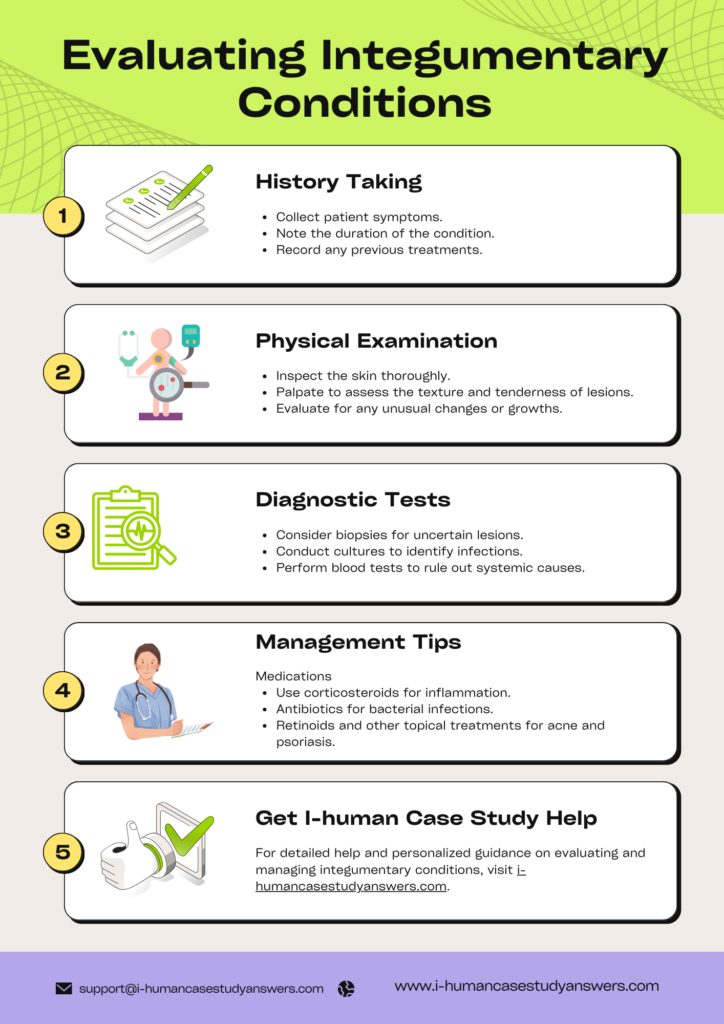In the world of healthcare education, the i-Human platform stands out as a revolutionary tool that provides immersive, realistic case studies for students. One of the critical areas covered by i-Human is the evaluation and management of integumentary conditions. This article explores the importance of these case studies, the common conditions covered, and how i-humancasestudyanswers.com can help students excel in their assignments.
Table of Contents
Importance of i-Human Case Studies
i-Human case studies simulate real-world clinical scenarios, allowing students to practice their diagnostic and treatment skills in a safe, controlled environment. This hands-on approach is particularly beneficial for understanding integumentary conditions, which involve the skin, hair, nails, and related glands. These conditions can range from benign issues to serious illnesses requiring prompt medical attention.
Common Integumentary Conditions Covered
In the i-Human platform, students encounter a variety of integumentary conditions, including:
- Dermatitis: Inflammatory skin conditions such as atopic dermatitis and contact dermatitis.
- Psoriasis: A chronic autoimmune condition that causes rapid skin cell production, leading to scaling and inflammation.
- Skin Infections: Bacterial, viral, and fungal infections like cellulitis, herpes simplex, and ringworm.
- Acne: A common condition affecting the sebaceous glands and hair follicles.
- Skin Cancer: Conditions like basal cell carcinoma, squamous cell carcinoma, and melanoma.
These case studies require students to perform detailed patient histories, physical examinations, differential diagnoses, and develop management plans.
Evaluating Integumentary Conditions
Evaluating integumentary conditions involves a thorough understanding of dermatology principles and the ability to apply them effectively. Key steps include:
- History Taking: Gathering information about the patient’s symptoms, duration, associated factors, and previous treatments.
- Physical Examination: Observing and palpating the skin to assess the type, distribution, and morphology of lesions.
- Diagnostic Tests: Ordering appropriate tests such as skin biopsies, cultures, or blood tests to confirm the diagnosis.
Managing Integumentary Conditions

Management of integumentary conditions often involves a combination of pharmacological and non-pharmacological approaches. Treatment plans may include:
- Medications: Topical or systemic treatments such as corticosteroids, antibiotics, antifungals, or immunomodulators.
- Lifestyle Modifications: Advice on skincare routines, avoidance of triggers, and diet changes.
- Follow-Up Care: Regular monitoring to assess treatment efficacy and make necessary adjustments.
How i-humancasestudyanswers.com Can Help
Navigating the complexities of integumentary case studies on the i-Human platform can be challenging. That’s where i-humancasestudyanswers.com comes in. Our expert team offers comprehensive support to help you excel in your assignments. Here’s how we can assist:
- Expert Guidance: Receive step-by-step assistance from experienced professionals in dermatology and related fields.
- Detailed Solutions: Access well-researched and accurate case study solutions to enhance your learning.
- Personalized Support: Get customized help tailored to your specific needs and academic requirements.
- Time Management: Save time and reduce stress by leveraging our expertise to complete your assignments efficiently.
- High-Quality Content: Ensure your submissions are of the highest quality, backed by credible sources and clinical evidence.
Ready to excel in your i-Human case studies? Visit i-humancasestudyanswers.com now and get the expert help you need to ace your assignments!



